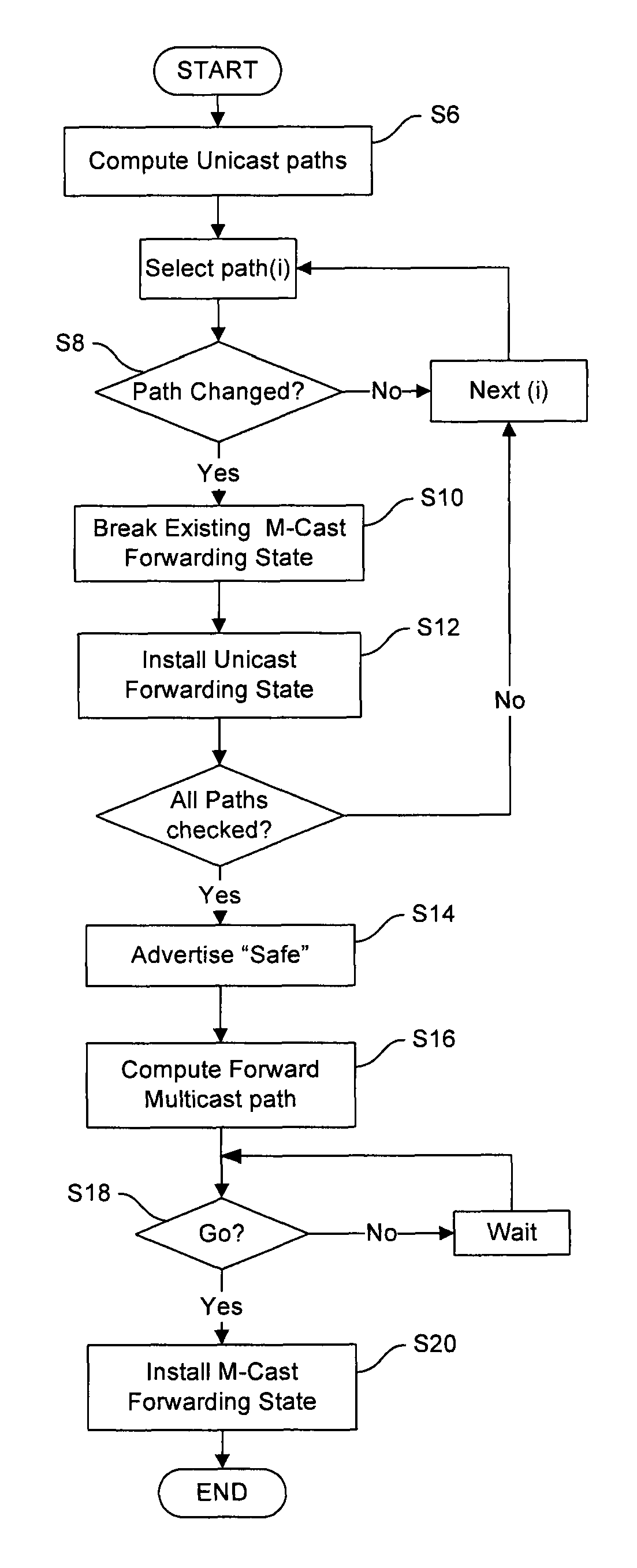Break before make forwarding information base (FIB) population for multicast
a packet network and information base technology, applied in the field of packet network traffic forwarding management, can solve the problems of congested network failure, loose synchronization of routing databases, transient loops, etc., and achieve the effect of parallelism
- Summary
- Abstract
- Description
- Claims
- Application Information
AI Technical Summary
Benefits of technology
Problems solved by technology
Method used
Image
Examples
Embodiment Construction
[0035]The present invention provides a method of computation and installation of multicast forwarding state in a network, in which the likelihood of transient loops is minimized, as compared to conventional methods. In a well behaved network, the likelihood of transient loops may be considered to be substantially eliminated. Embodiments of the invention are described below, by way of example only, with reference to FIGS. 3-4d.
[0036]As described above with reference to FIG. 1, when a node detects or is informed of a change in the network topology, it re-computes the shortest path between each node in the network such that the computing node can determine for which shortest paths it is an originating, transit or terminating node. When multicast group membership information is also advertised by the control plane, the node can then determine where intersections of multicast group membership occur for each of those pairs, inferring a multicast path accordingly. The forwarding state req...
PUM
 Login to View More
Login to View More Abstract
Description
Claims
Application Information
 Login to View More
Login to View More - R&D
- Intellectual Property
- Life Sciences
- Materials
- Tech Scout
- Unparalleled Data Quality
- Higher Quality Content
- 60% Fewer Hallucinations
Browse by: Latest US Patents, China's latest patents, Technical Efficacy Thesaurus, Application Domain, Technology Topic, Popular Technical Reports.
© 2025 PatSnap. All rights reserved.Legal|Privacy policy|Modern Slavery Act Transparency Statement|Sitemap|About US| Contact US: help@patsnap.com



